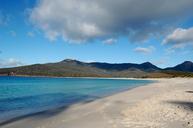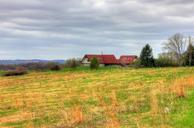Introduction
In a world that often prioritizes the new and the shiny, there lies a profound beauty in the old and the worn. Nature and decay: capturing the beauty of aging structures is not just a theme; it's a philosophy reflected in various forms of art, particularly photography. As we traverse through time, structures age and develop unique characteristics shaped by weather, time, and nature itself. This article will explore how photographers can capture this intricate dance between nature and decay through various techniques, styles, and themes in photography.
Why focus on aging structures? Because they tell stories—stories of resilience, transformation, and sometimes even sorrow. Through self-portrait photography set against these backdrops or focusing solely on the structures themselves, artists can explore deep human narratives as they reflect on personal growth, change, and time’s relentless march.
The Essence of Nature and Decay in Photography
Understanding Nature's Role in Decay
Nature is an omnipresent force that influences everything around us. When it comes to aging structures, nature plays a dual role. It acts both as a sculptor that shapes these edifices over time and as a reclaiming force that gradually takes them back into its fold. The interplay between man-made constructions and natural elements creates fascinating compositions that can evoke strong emotions.
The Process of Decay
As structures age, they undergo physical changes. Cracks form in walls; paint peels off surfaces; metals rust; vegetation creeps in to fill every crevice. This decay can be seen as negative or positive depending on one’s perspective. Many photographers embrace this "withering beauty," finding charm in imperfections.
Photographic Techniques:
- Use macro lenses to capture textures. Experiment with shutter speed to emphasize movement—like flowing vines or shifting shadows.
Capturing Ruin and Bloom in Photography
The concept of "ruin and bloom" manifests beautifully when capturing decayed structures alongside thriving flora. These contrasts tell compelling stories about resilience—the ability to grow even amidst desolation.
Moss-Covered Ruins: A Perfect Subject
Moss-covered ruins serve as an artistic metaphor for nature's reclamation process. They symbolize life flourishing amidst decay—a narrative everyone can relate to at some level.
Tips for Capturing Mossy Walls:
Choose early morning or late afternoon light for softer shadows. Use black-and-white photography to accentuate textures. Capture details with close-up shots to emphasize contrasts between green moss and crumbling stone.Exploring Artistic Expression through Aging Structures
Self-Portrait Photography Amongst Decay
Self-portrait photography provides an excellent avenue for personal exploration against the backdrop of aging structures. Photographers can express their emotions while symbolically connecting their experiences with themes of decay.
Timeless Self-Portraits
What makes a self-portrait timeless? It’s about context—placing oneself within ruins tells viewers something profound about vulnerability and strength.
Considerations for Creating Timeless Self-Portraits:
- Think about your positioning within the frame. Use natural elements (like creeping vines) to create layers. Play with shadows to highlight emotional depth.
Human Narratives Explored Through Visuals
Every photograph has the potential to weave intricate narratives highlighting human experiences intertwined with themes like growth, loss, hope, or renewal.
Photography Themes That Resonate
Withering Beauty: Capturing subjects that reflect deterioration yet possess an undeniable allure. Gravity and Growth: Exploring how aging structures lean under their own weight while nature finds ways to flourish around them. Personal Growth Through Art: Using photography as a medium for self-exploration during transitions in life.Techniques for Capturing Decay Aesthetically
Playing with Time in Photography
Time-lapse techniques combined with traditional photographic methods allow artists to explore how decay occurs over extended periods visually.
Shutter Speed Experiments
Understanding shutter speed is essential for capturing motion—be it the gentle sway of grass or rapid weather changes affecting aging buildings.
Experimenting Techniques:
- Slow shutter speeds can create dreamy effects emphasizing movement. Fast shutter speeds can capture fleeting moments like raindrops falling on rusted metal.
Artistic Self-Expression Amidst Ruins
Each ruin offers unique opportunities for artistic expression; photographers must approach each subject with curiosity rather than mere observation.
Symbolic Photography Concepts
Symbolism adds layers of meaning:
- A broken window could represent lost opportunities. Overgrown pathways may symbolize forgotten journeys or untraveled roads.
Aesthetic Fine Art Photography Approaches
Fine Art Photography: Beyond Just Pictures
Fine art photography elevates images from simple snapshots to thoughtful expressions exploring deeper themes—particularly those surrounding nature versus structure.

Curating Visual Stories
Photographers should think critically:
- What story do you want your audience to feel? How can you use composition—like leading lines—to guide viewers’ eyes?
Nature Reclaiming Structures: An Ongoing Narrative
The ongoing theme of nature reclaiming human spaces serves as both inspiration and cautionary tale regarding our relationship with our environment.
Narrative Photography Techniques
Use narrative techniques by framing compositions:
Include elements showing deterioration alongside signs of new life. Explore angles showcasing juxtaposition—what was vs what is now.Finding Joyful Moments Amidst Decay
Joyful Photography: Embracing Imperfections
Finding joy amidst decay isn’t just possible; it’s often necessary! Celebrating imperfections allows artists to convey authenticity through their work—a refreshing contrast against idealized aesthetics prevalent today.
Creating Aesthetic Fine Art Images
Creating aesthetically pleasing photos despite flaws requires technical skill:
- Use complementary colors found within decaying materials (e.g., rusty reds against greens).
Combining Light & Shadow
Light plays an integral role in aesthetic photography—the way it interacts with decaying materials offers endless possibilities http://innervista704.bearsfanteamshop.com/interior-decor-inspiration-finding-your-style-through-wall-art for creativity!
Tips For Mastering Light
Shoot during golden hour when sunlight bathes everything warmly. Experiment with chiaroscuro effects highlighting depth between light/dark areas within frames.The Poetics of Nature & Decay
Poetic Photography: Crafting Visual Poetry
Poetry transcends words—it evokes feelings without needing explanations! Similarly through photographic art captures nuances embedded within aged environments resonate deeply emotionally with viewers creating connections beyond visuals alone!
Emotional Responses Evoked
Ask yourself what emotions arise upon observing certain scenes? Is there nostalgia? Sadness? Hope?
How To Capture This Emotionally Charged Imagery: 1) Utilize monochromatic color schemes which amplify emotional resonance, 2) Focus closely on objects that evoke specific feelings (a cracked pot filled only halfway).
FAQs
What equipment do I need for capturing decay effectively?
To effectively capture decay-themed photographs you'll want a DSLR or mirrorless camera along with a versatile lens (macro/standard), tripod (for stability), possibly filters (ND/UV), plus editing software such as Adobe Lightroom or Photoshop!
Can I use my smartphone for aesthetic photography?
Absolutely! Many smartphones boast advanced cameras capable enough for capturing stunning images if utilized creatively through composition/lighting techniques!
What are some good locations for photographing aging structures?
Look out locally! Abandoned buildings near urban areas often provide rich subjects—you'd be surprised where you might find hidden gems just waiting!
How do I ensure my photos have depth?
Utilize foreground elements creatively while maintaining balanced composition throughout image frames—it adds layer enhancing visual storytelling effectively!

Are there particular times best suited for photographing ruins?
Golden hour (just after sunrise/before sunset) provides warm soft lighting enhancing textures while casting enchanting long shadows making everything appear more ethereal!
What editing techniques enhance photographs focused on decay?
Consider using high contrast adjustments alongside saturation tweaks—this highlights details lending impactful drama elevating visual tension captured originally during shoots!
Conclusion
Nature and decay: capturing the beauty of aging structures opens up rich avenues for exploration that tantalizes both photographers and audiences alike! Through various styles—from self-exploration via portraiture amongst ruins—to embracing joyful moments amid imperfection—we find ourselves drawn closer towards understanding our place within this timeless narrative interplay between humanity & nature reclaiming what once was theirs again over time! So grab your camera gear go venture forth discovering these marvelous stories waiting patiently beneath layers upon layers life lived gracefully unfolding before us every single day!